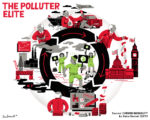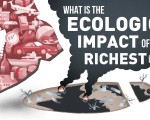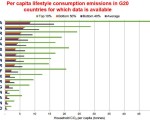
Dario Kenner, June 2019 We are currently at a moment of extreme and rising inequality in many countries around the world. Rarely are the links made between the extremely wealthy and the personal liability these individuals have in contributing to potentially irreversible climate change and […]

What is the carbon footprint of the richest 1% and how can it be reduced? This article is a response to a report by Thomas Piketty and Lucas Chancel on unequal carbon footprints. I also explore how policies to redistribute wealth could potentially increase or decrease an individual’s carbon footprint.

Extreme inequality and the wealth concentrated in the hands of the richest 1% is gaining increasing attention. However, these debates often do not include discussion of unsustainable levels of consumption (referred to as overconsumption) that are contributing to dangerous climate change and another potential mass extinction.

In April 2016 a group of academics and representatives from NGOs met at the International Institute for Environment and Development in London to discuss the challenge of reducing inequality and unsustainable consumption. I presented my research on the ecological footprint of the richest people and set out what I saw as the priority questions to focus on.




